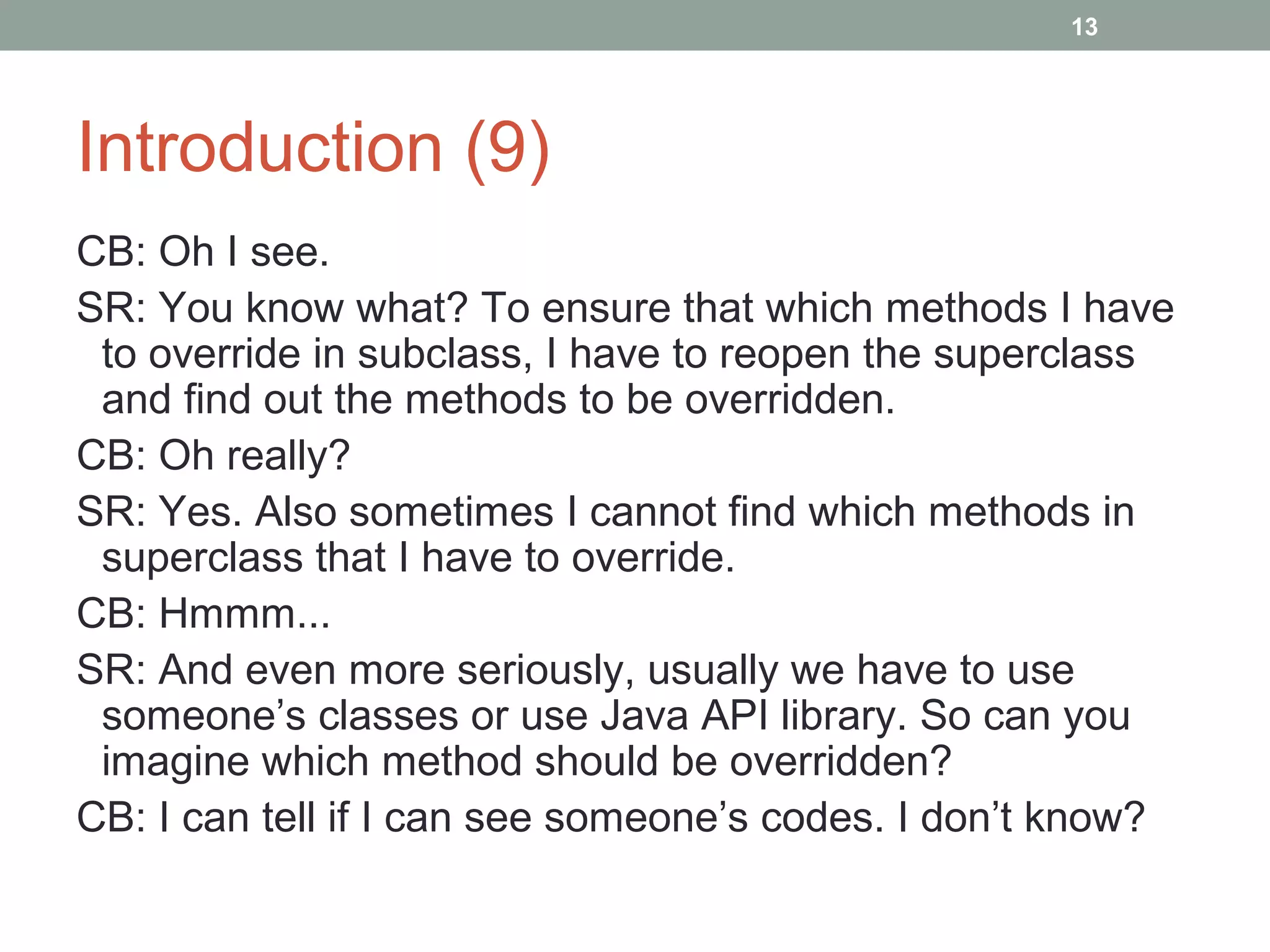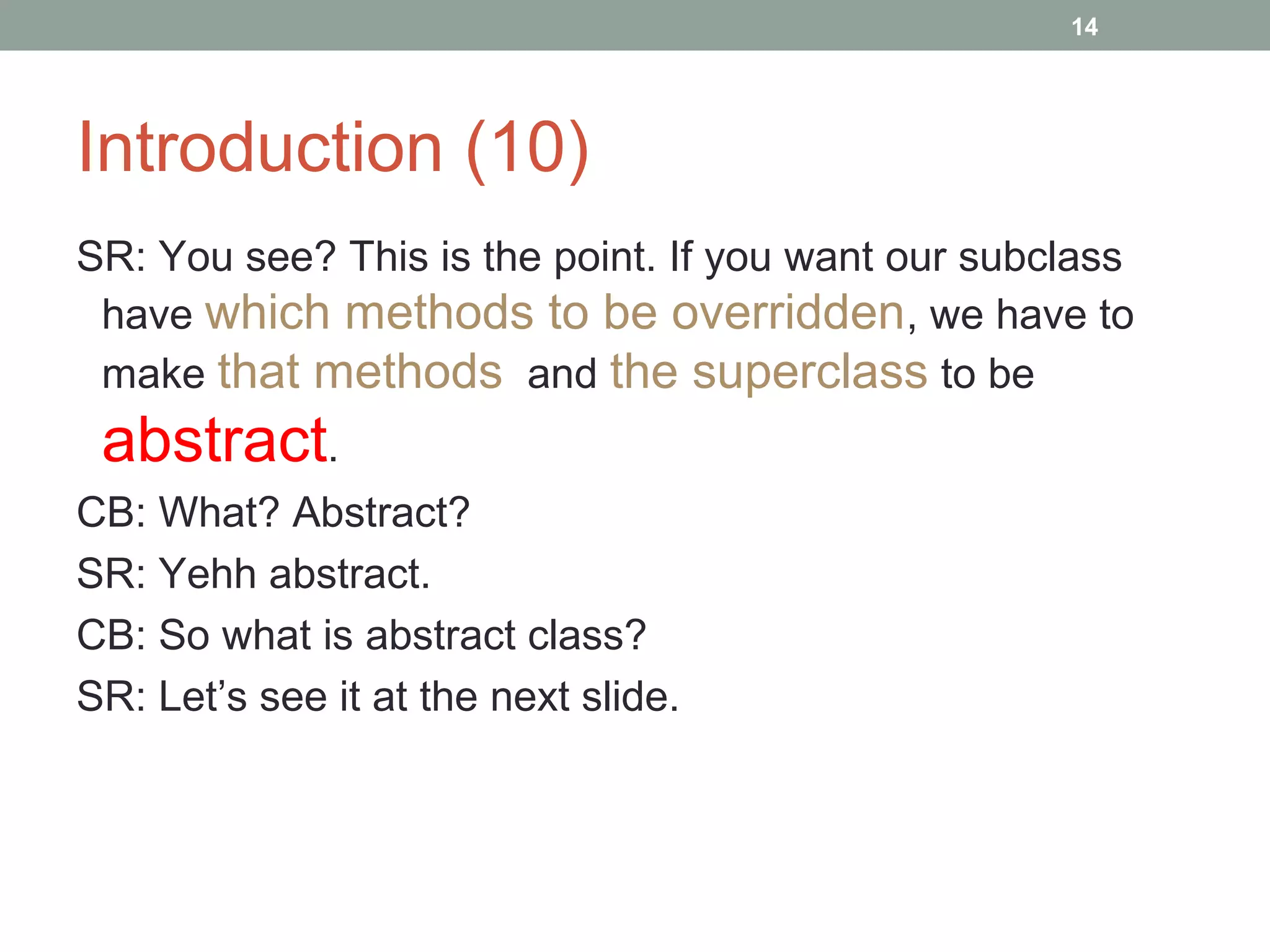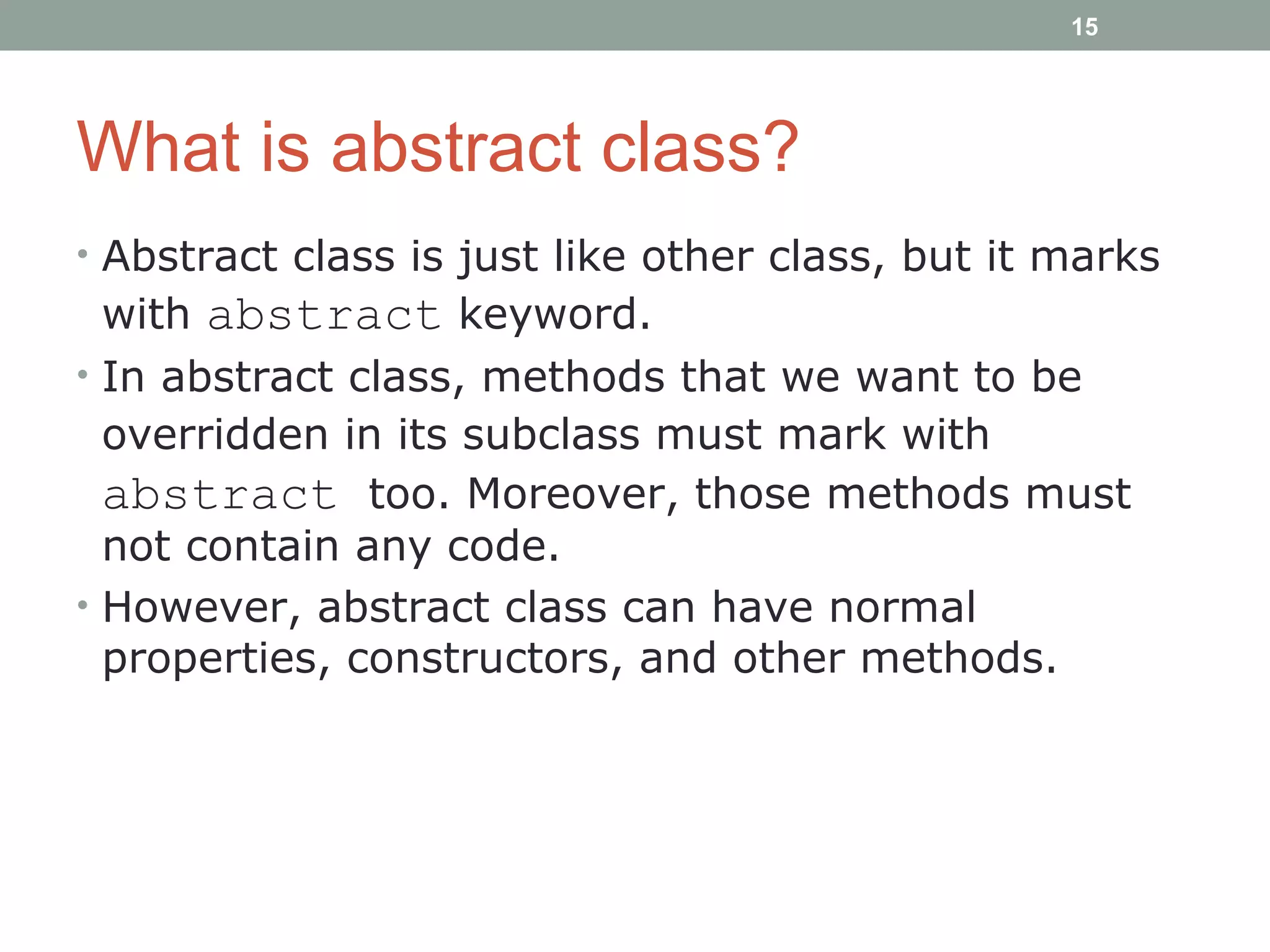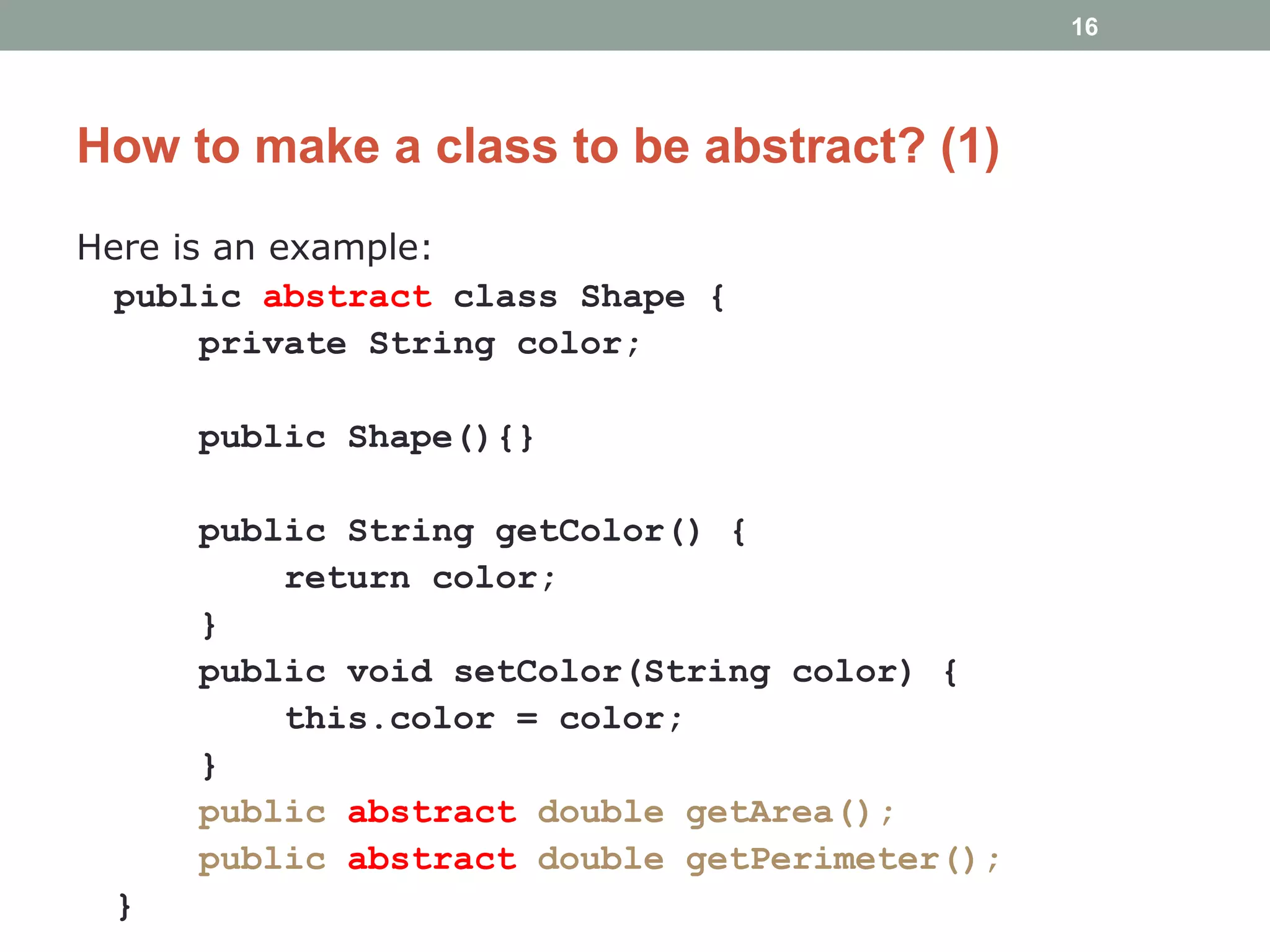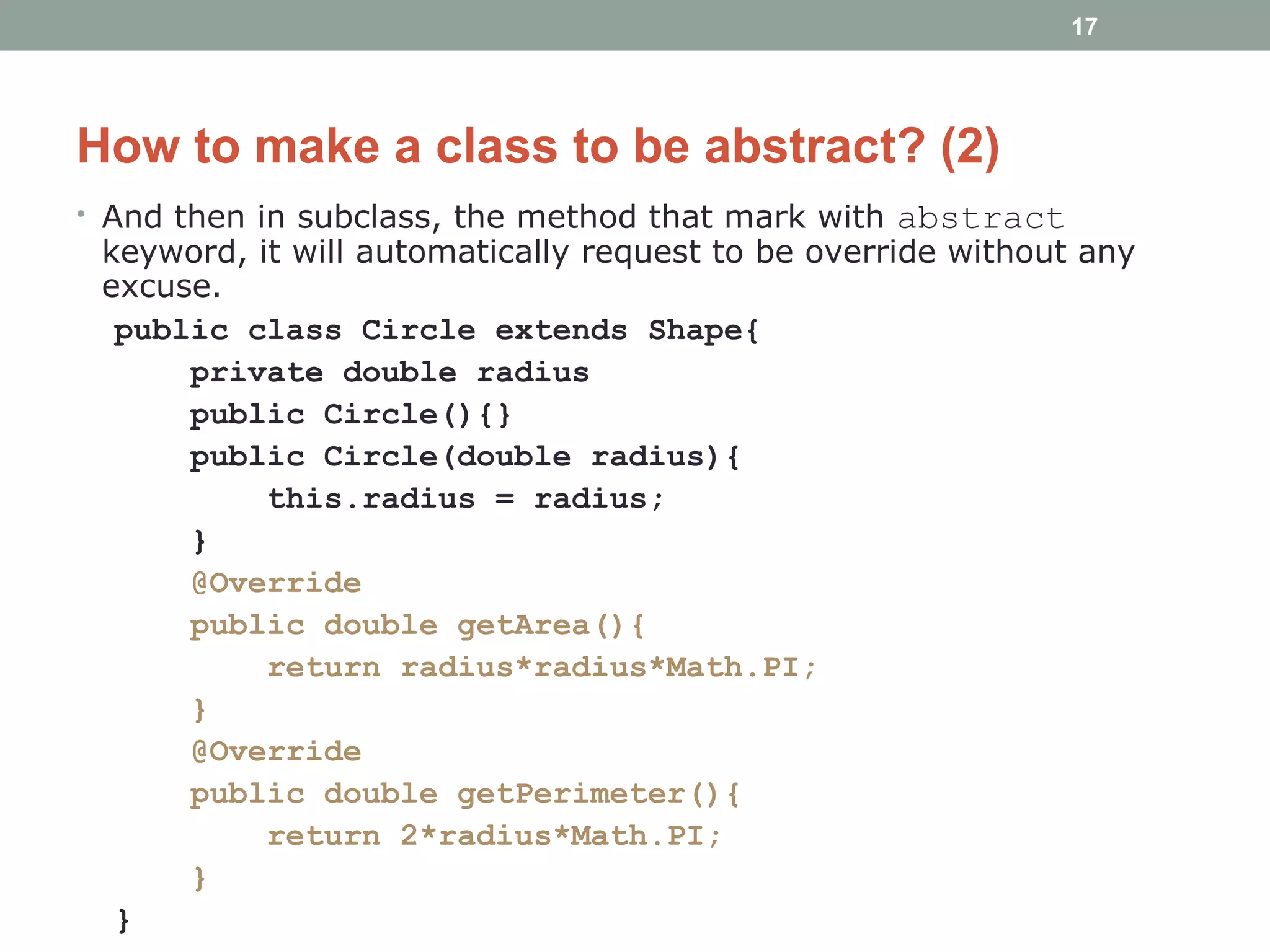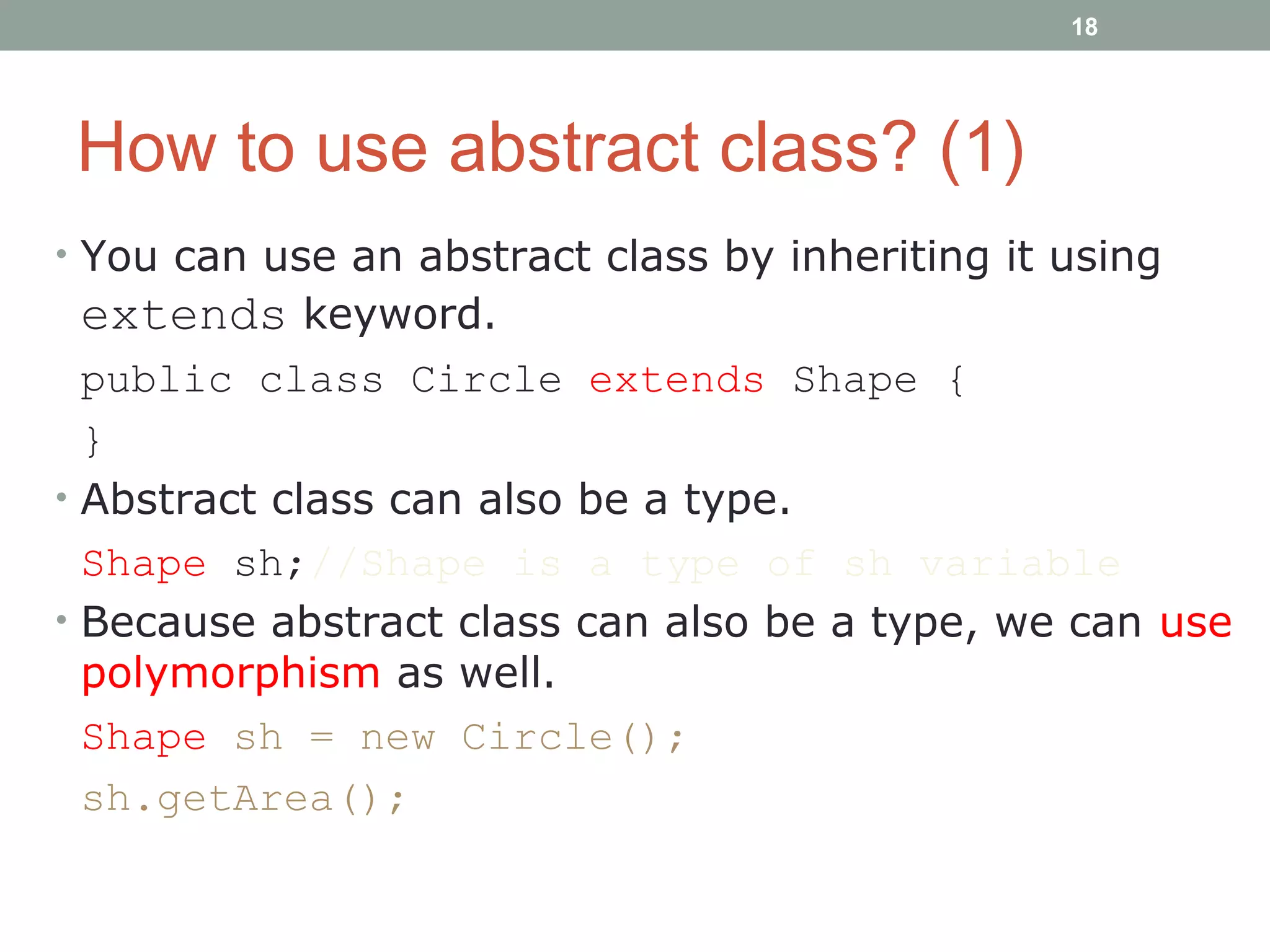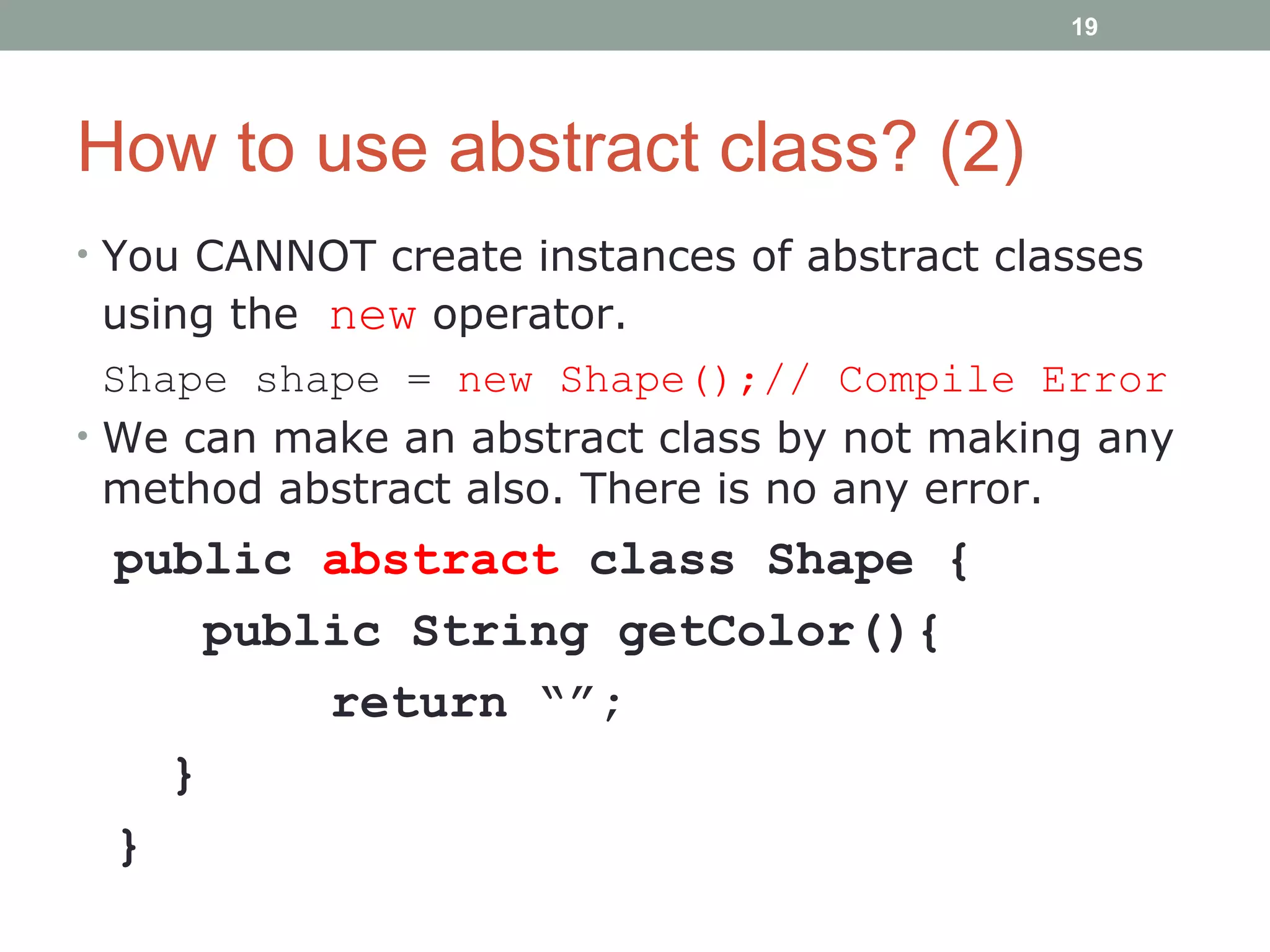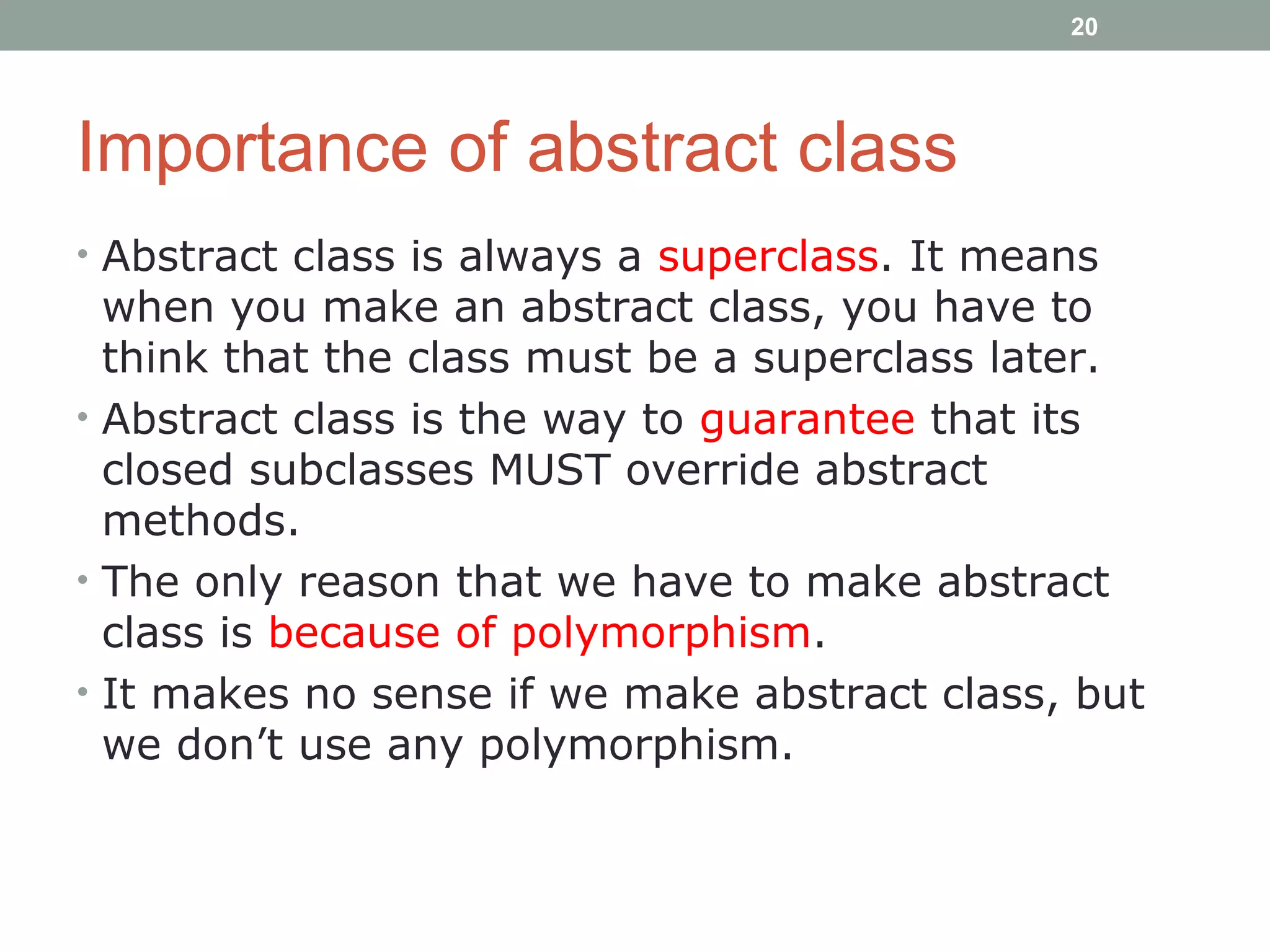This document discusses abstract classes in Java. It defines an abstract class as a class marked with the abstract keyword that can contain abstract methods without implementations, as well as normal methods. Subclasses must override any abstract methods, ensuring they provide an implementation. The document provides an example of an abstract Shape class with abstract getArea() and getPerimeter() methods. It also discusses how to create abstract classes, use them through inheritance and polymorphism, and their importance in enforcing method implementations in subclasses for polymorphic behavior.
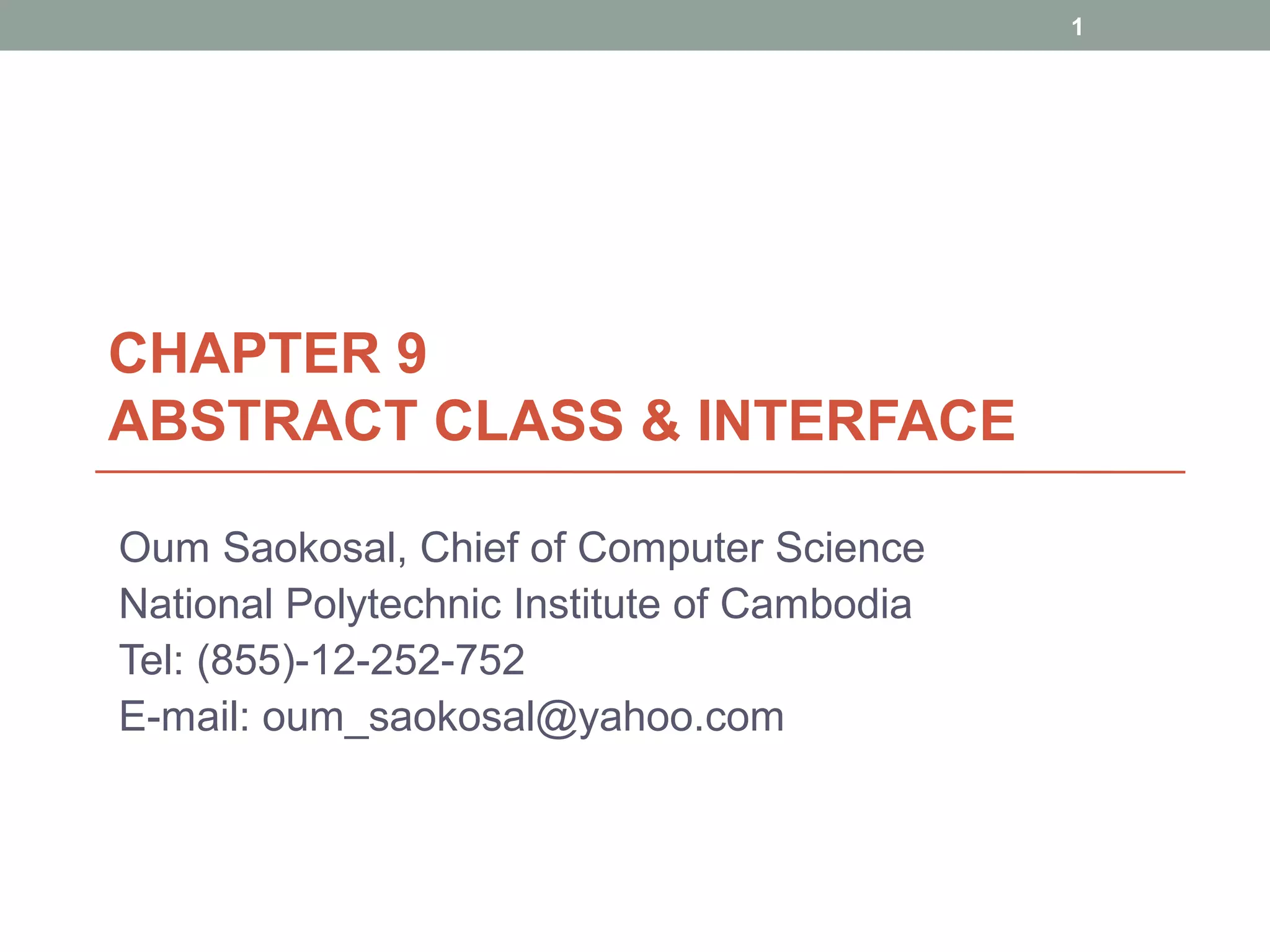

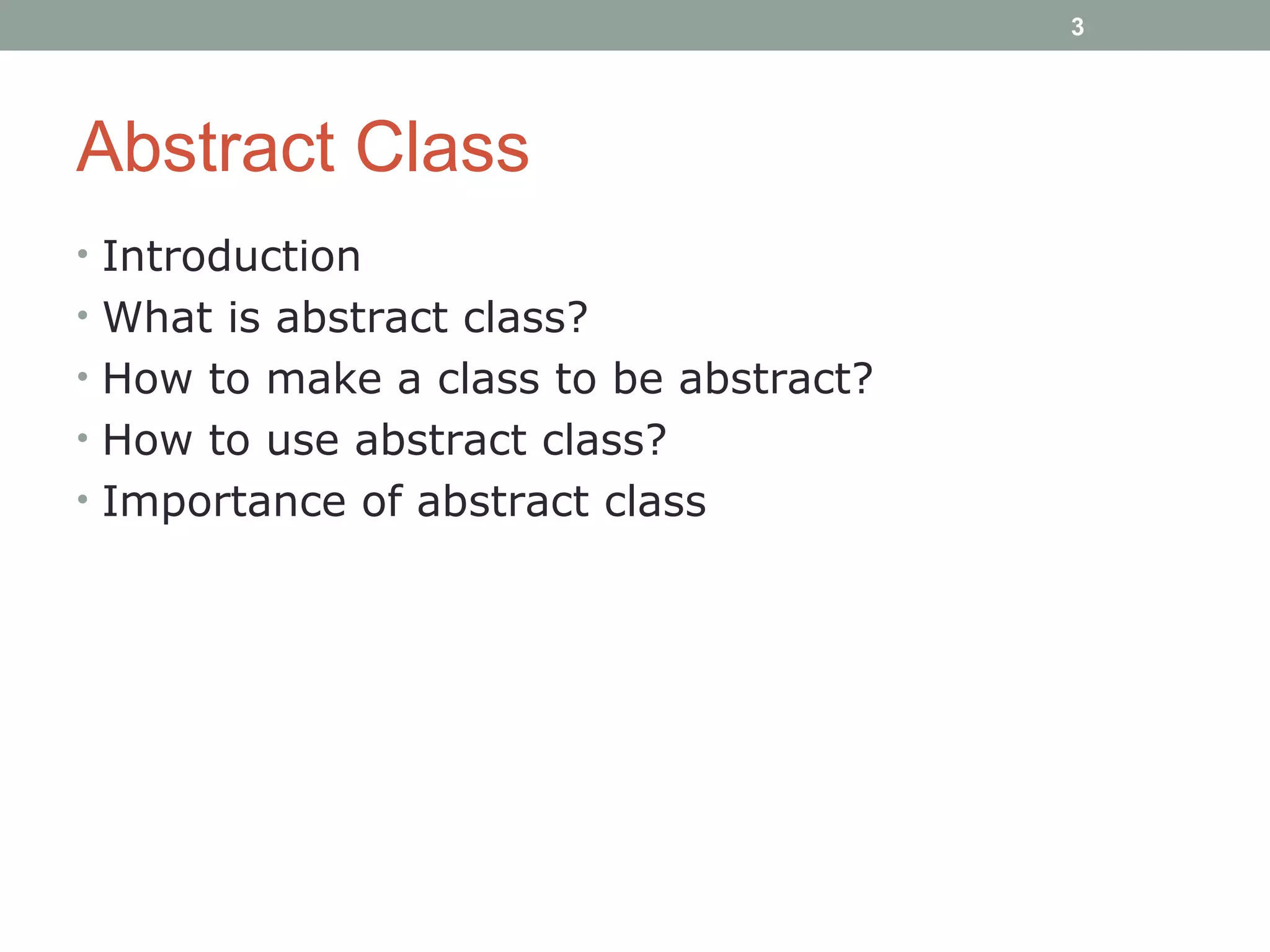
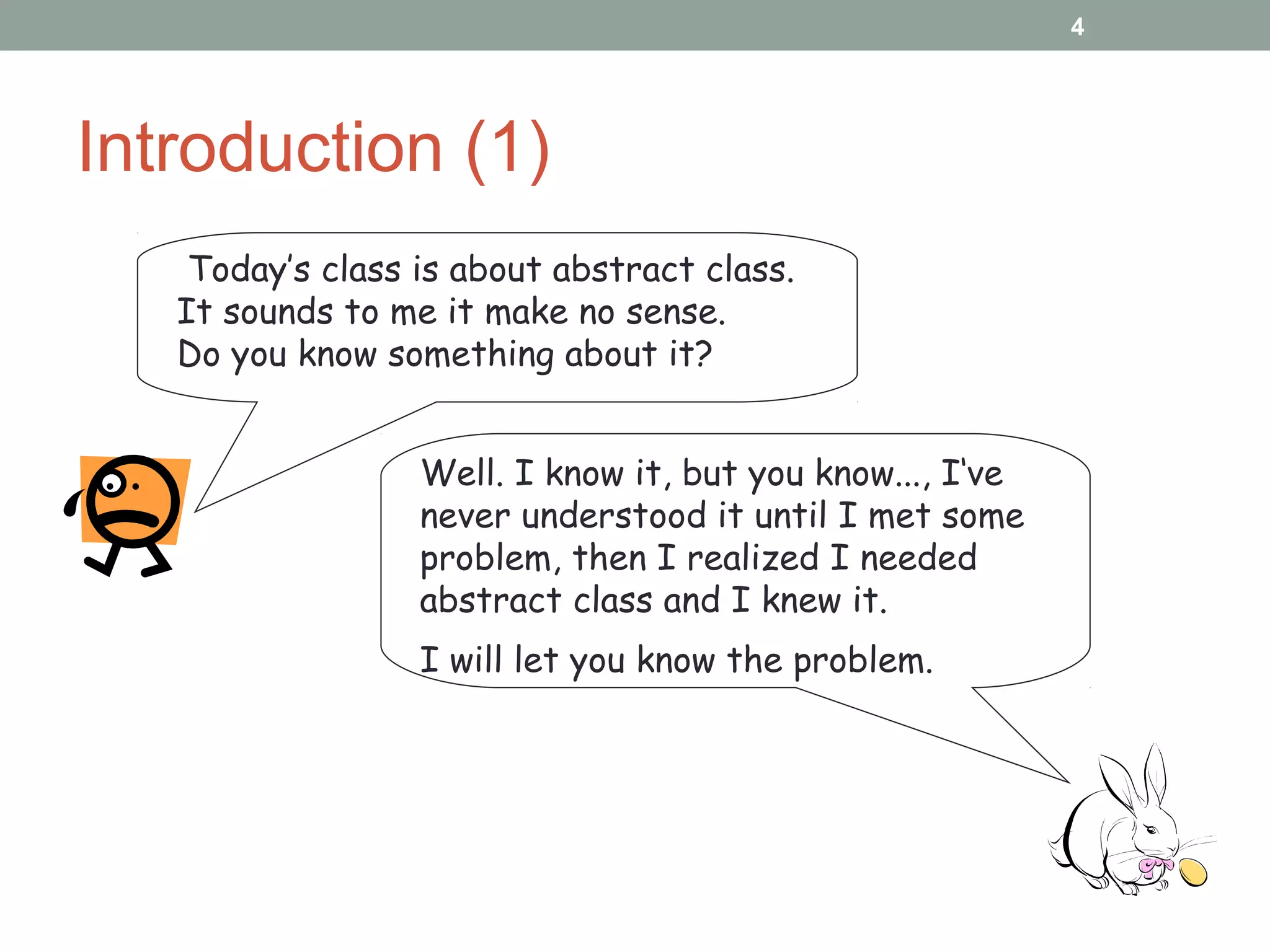
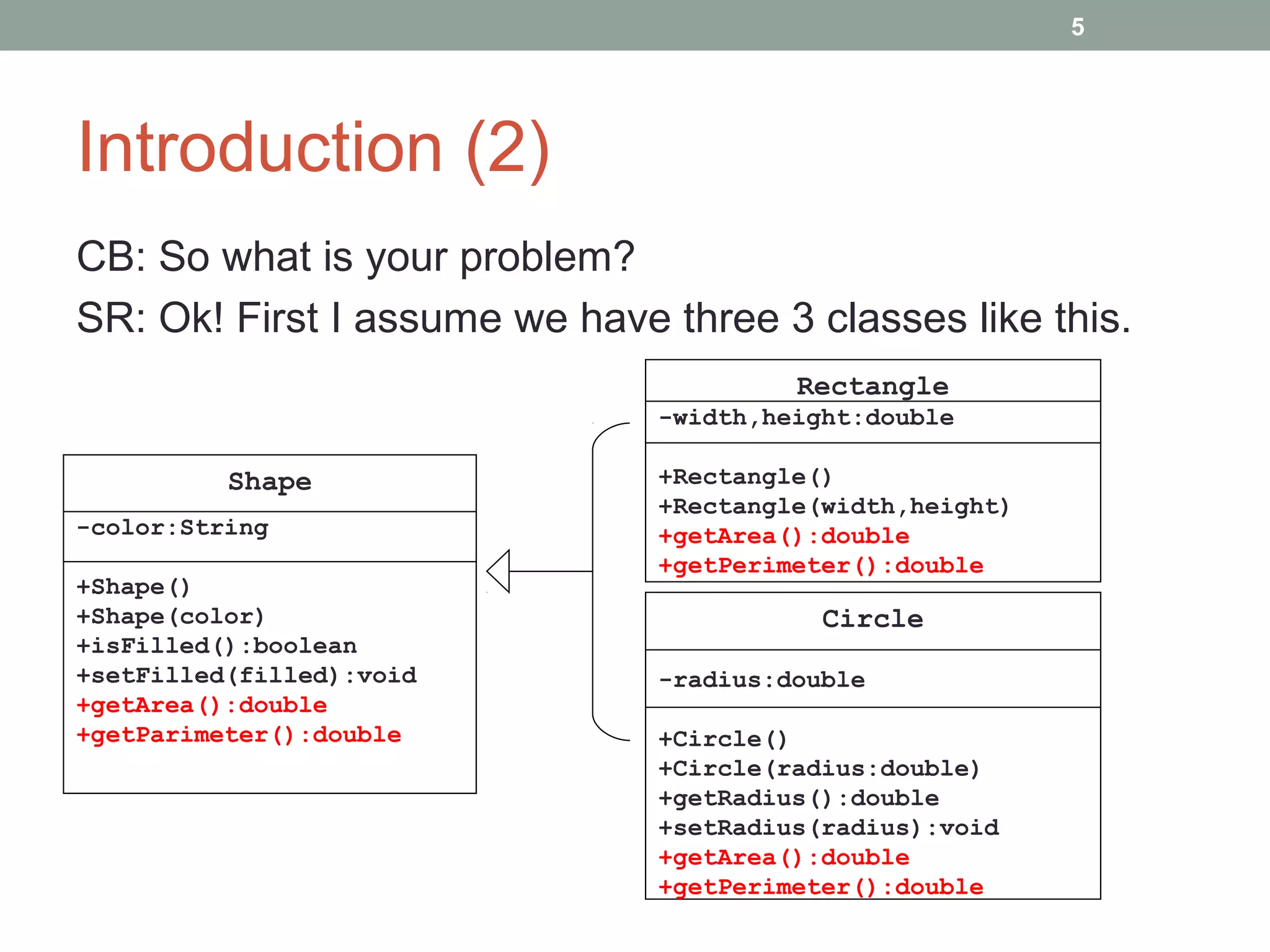
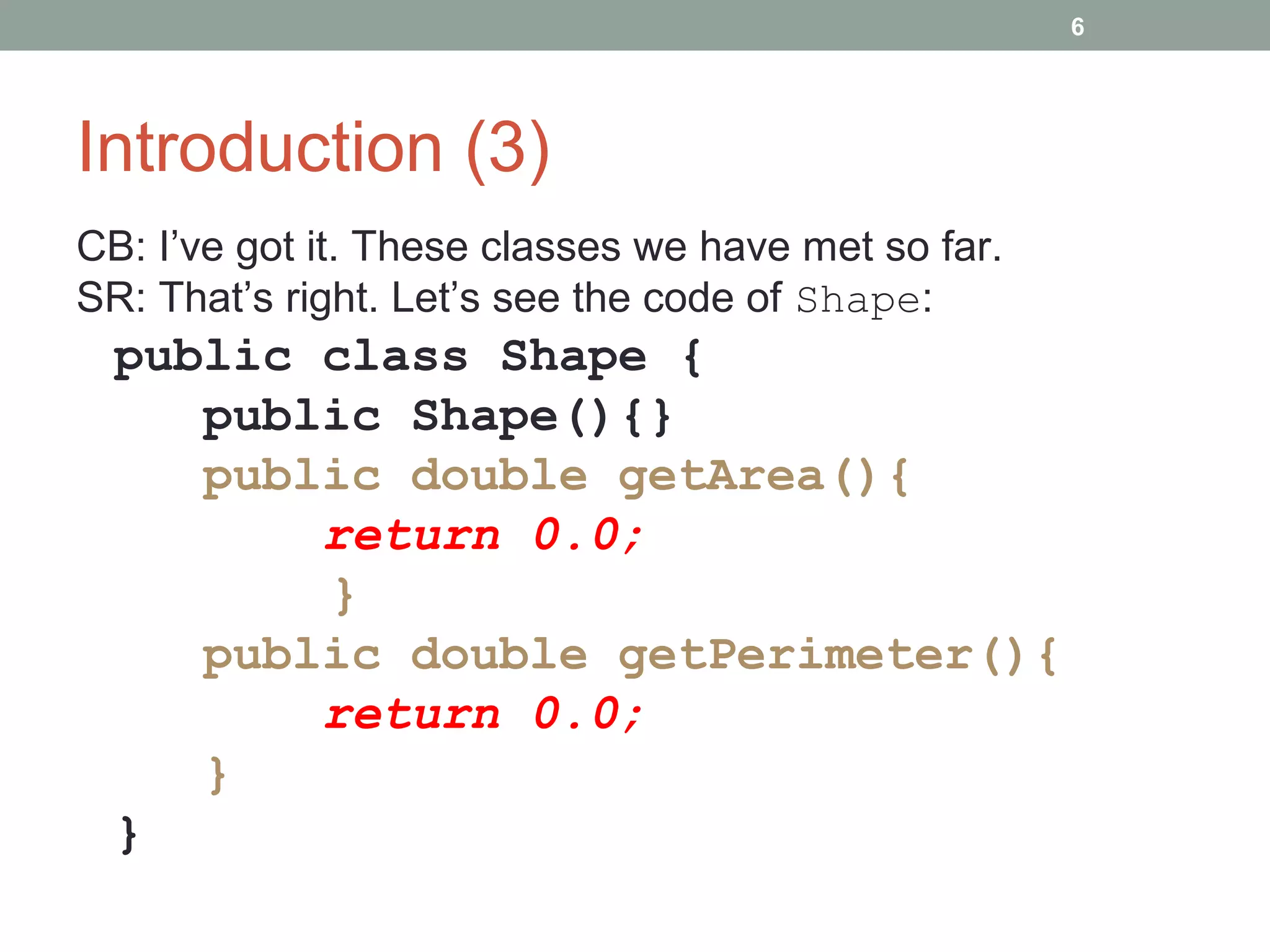
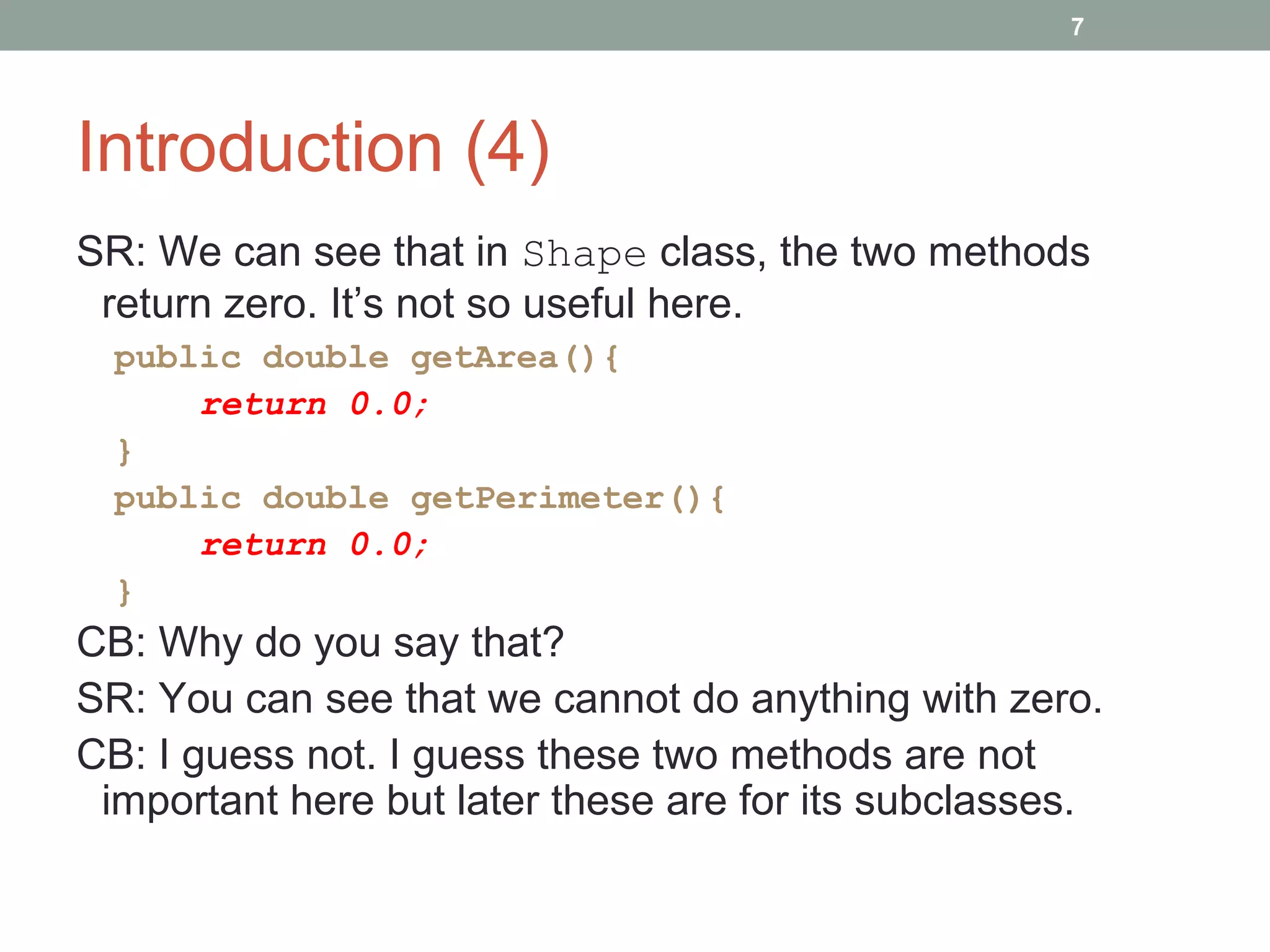
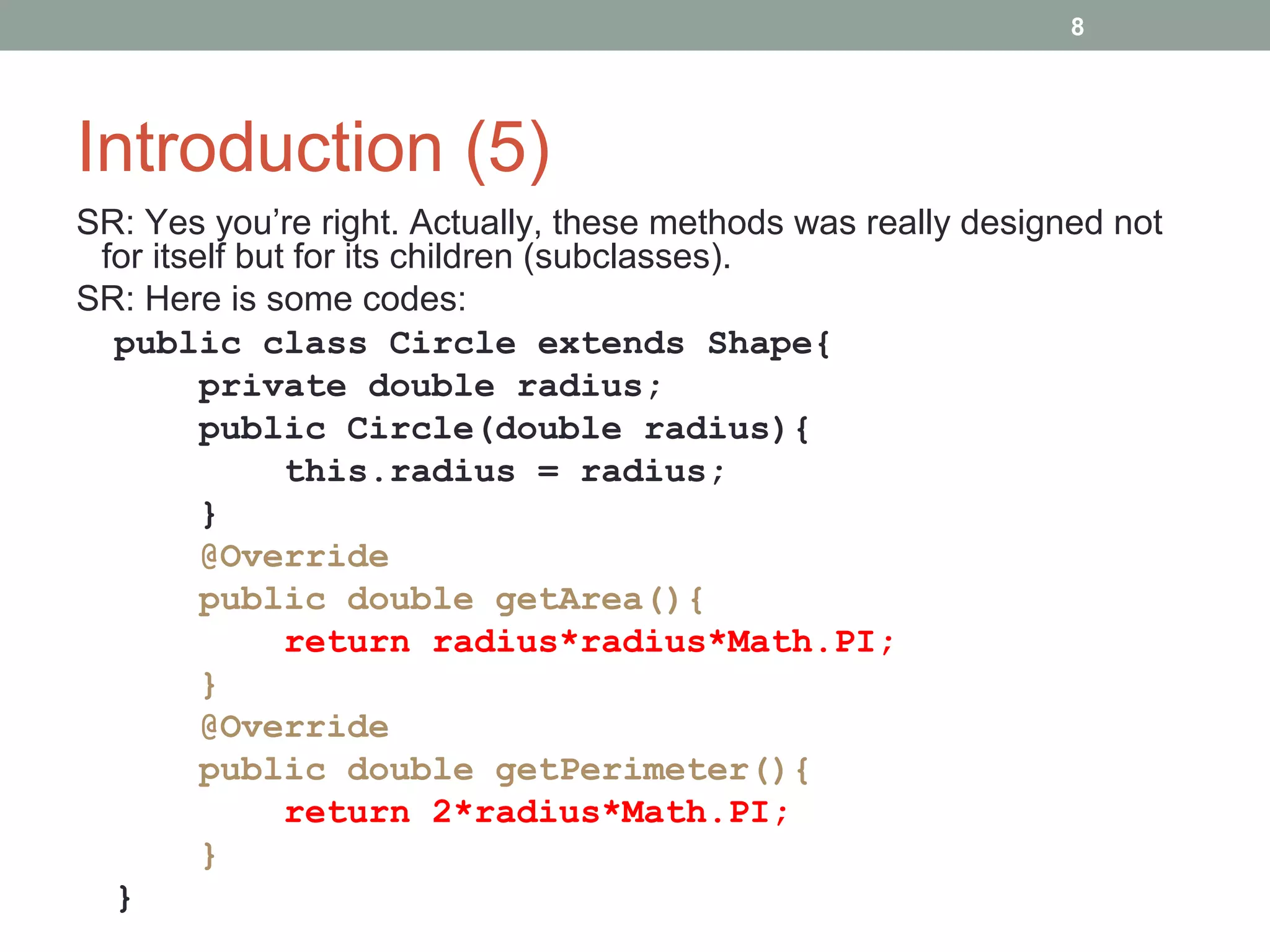
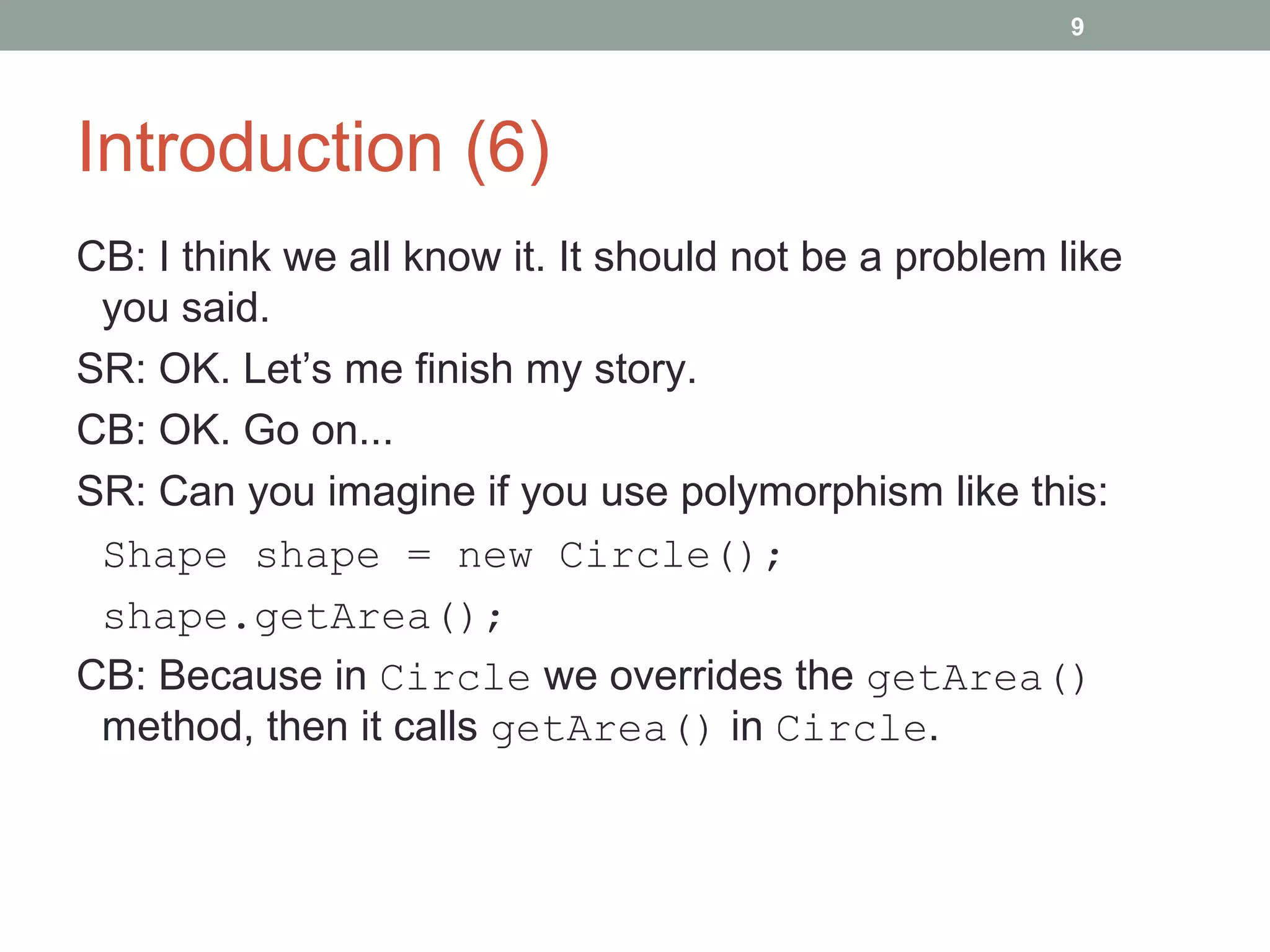
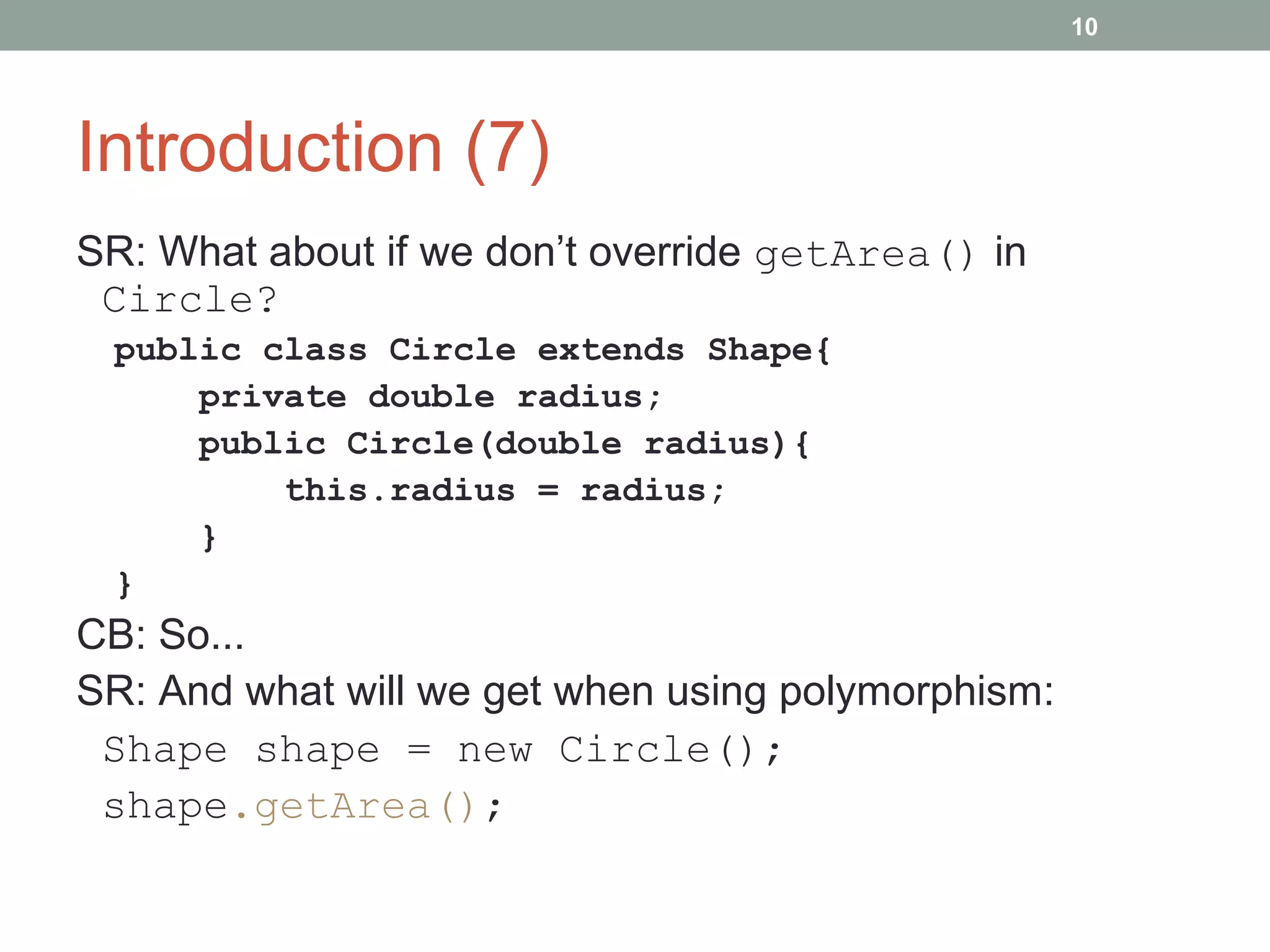
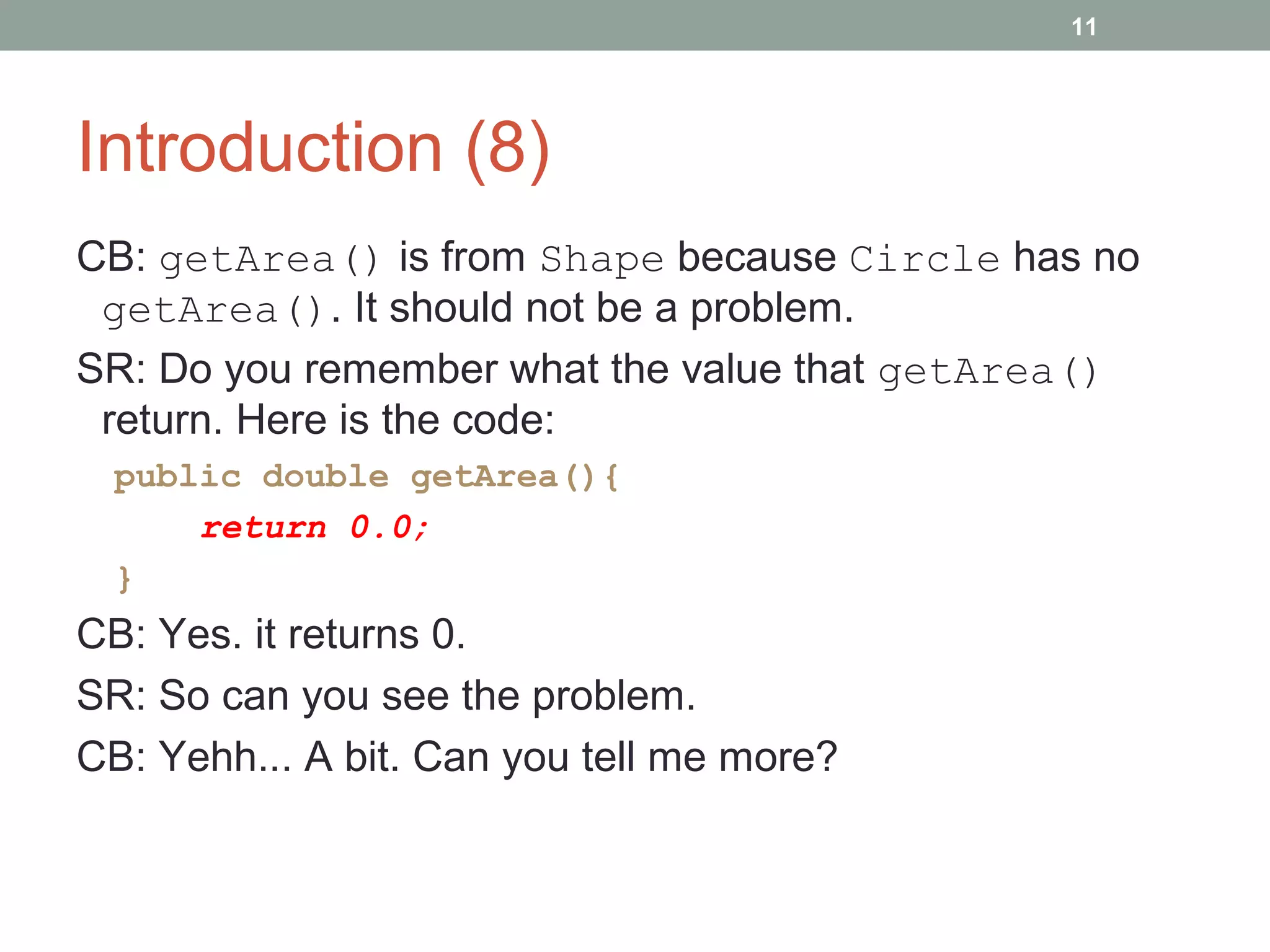
![Introduction (9)
SR: You know, in my experience, sometimes we expected
to get a right calculation from subclass just like this:
public static void main(String[] args){
showArea(new Circle());
}
public static showArea(Shape s){
System.out.print(s.getArea());
}
SR: But I never get it right because I forgot to override in
my subclass, in this example, Circle class.
12](https://image.slidesharecdn.com/chapter9abstractclass-151019085950-lva1-app6892/75/Java-Programming-Introduction-to-Abstract-Class-12-2048.jpg)
